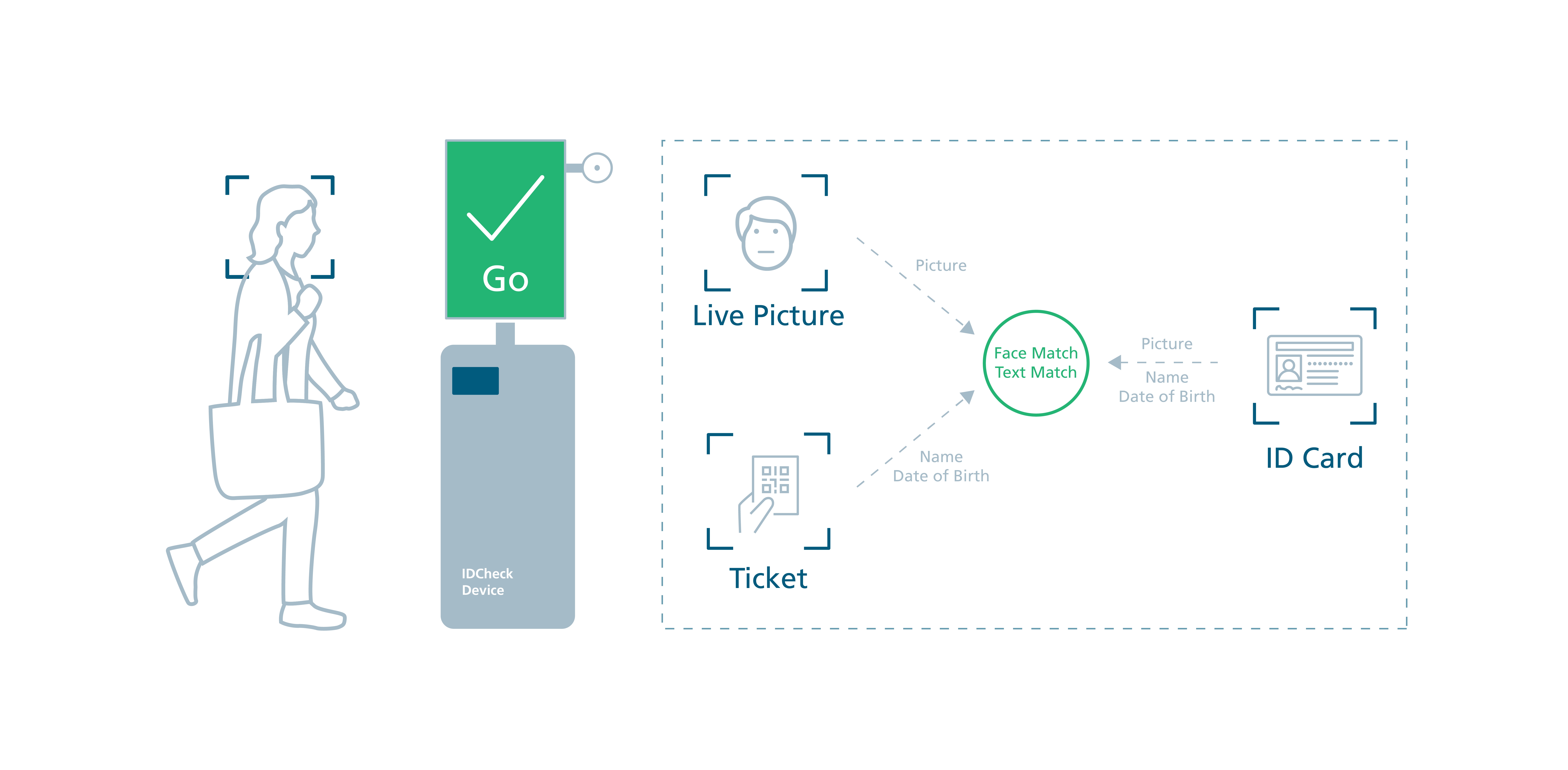AI-based identity verification
The AI-based IDCheck facilitates secure, automated entry management to both buildings and events, greatly speeding up the time and effort required for identity verification and document control. It reliably and quickly verifies the identity of a person by visually matching their live camera image with the identity documents required for entry. Based on privacy-compliant technologies developed by Fraunhofer IDMT, the name, date of birth and face are securely processed without the need to store or transmit data.
Robust and privacy-compliant verification
Fraunhofer IDMT's robust image recognition technology extracts text-based personal and image information from identity documents without relying on stored biometric data (e.g. on the passport). Working in real-time, IDCheck reliably and quickly verifies permission to enter by matching a live camera image of the person to an official photo identity document. This could be a passport or employee ID card containing personal information like name and date of birth, which is then matched to another document or previously stored data, such as a personalized ticket or vaccination certificate that has no photo of the person. Depending on the security requirement, any document containing first and last name, date of birth and an official photo can be used for identity verification. The whole process runs securely on a small single-chip computer device, the size of a credit card, that does not need to be connected to a network. This helps to avoid privacy problems. There is no need to store or transfer sensitive data.
Fast and secure entry management
IDCheck accelerates and simplifies access and entry management thanks to Fraunhofer IDMT’s automated and reliable identity verification technologies. Long waiting times at the entrance to events are significantly reduced. Additional personnel requirements for access controls and manual checks are eliminated.
Areas of Application
IDCheck can be used wherever the identity of a person needs to be verified against an official document, such as a vaccination certificate. It can be applied to many situations, such as controlling the access of employees and authorized persons to companies and institutional buildings, live events, or automated hotel check-ins.

 Fraunhofer Institute for Digital Media Technology IDMT
Fraunhofer Institute for Digital Media Technology IDMT
